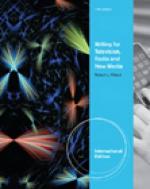|
This section contains 2,860 words (approx. 10 pages at 300 words per page) |

|
In September of 1895, Guglielmo Marconi, a young Italian inventor, pioneered wireless telegraphy when he transmitted a message to his brother, who was out of sight beyond a hill. By 1906, U.S. inventor Lee De Forest had greatly increased the potential of Marconi's work by developing a three-electrode vacuum-tube amplifier that made modern radio broadcasts possible. From these relatively humble beginnings radio quickly evolved to become the basis of an electronic media revolution that would shape the face of American popular culture during the middle years of the twentieth century. From the early 1920s to the mid-1950s radio both recorded and influenced popular culture in a way that no other media had ever done, forever changing the way information and entertainment would be disseminated and paving the way for television.
 An example of an early radio.
An example of an early radio.
The first modern radio station came into being in 1920, when Westinghouse engineer...
|
This section contains 2,860 words (approx. 10 pages at 300 words per page) |

|


